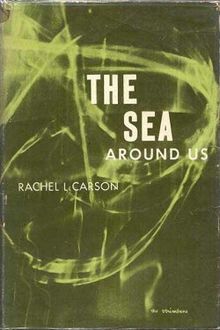Timeline
Death & Legacy
Rachel Carson died of a heart attack at age 56 in her home in Silent Spring, Maryland in 1964. In response to the public outrage sparked by Silent Spring, the President took legal action, leading to the creation of the U. S. Environmental Protection Agency. She was credited with the birth of the worldwide conservation movement. She persevered in spite of her difficulties and found success, and made use of that to change the world. .Her life remains a testament to the capability of women around the world, the financially disadvantaged, and the sick. With that much passion for something important to..Read More
A Third Tragedy, Breast Cancer, and Silent Spring
By late 1957, Carson was focused on the issue of pesticide spraying. She gathered evidence of the harmful effects of such chemicals on the environment to write a book and wrote letters speaking out against the plan. From 1958 to 1962, Carson wrote the Silent Spring to speak out against widespread use of pesticide spraying and its toxic chemical ingredients. Its publication was delayed due to Carson’s ailing health and her battle with cancer, and was strongly opposed by the chemical industry. The book was finally published in 1962.
Dorothy Freeman & Transition to Conservation Work
In 1953, Carson met Dorothy Freeman, her very close friend with whom her friendship would last the rest of Carson’s life. In 1955, Houghton Muffin published her third book about the sea, The Edge of The Sea. It received highly favorable reviews. In the next 2-3 years she continued to explore her writing and her interests turned to conservation, becoming involved with The Nature Conservancy and other conservation groups.
The Sea Around Us and Writing Career
In 1951, Oxford University Press published Carson’s work The Sea Around Us. It won the 1952 National Book Award for Nonfiction and the John Burroughs Medal, and also resulted in her reception of 2 honorary doctorates. The book’s success led to the republication of Under The Sea Wind, which also became a bestseller. By 1952 Carson’s works had met critical and commercial success, thereby providing her the financial security to give up her job and concentrate on writing full time.
Early Career & Publications
Carson encountered a turning point in her career when the Atlantic Monthly published her essay, Undersea, and she was contacted by publisher Simon & Schuster to suggest that she expand it into a book. She published Under the Sea WInd in 1941, which received critical acclaim but sold poorly. In 1948, she decided to become a full-time writer.
Transition Into the Workforce
Carson’s first job was at the U. S. Bureau of Fisheries. She wrote radio copies of 7-minute programs intended to generate public interest in marine life, garnering a success never before seen by her predecessors. She topped the civil service exam and became the second woman to join the Bureau as a full-time professional junior aquatic biologist in 1936.
Education







